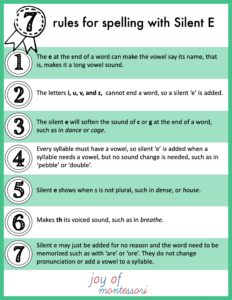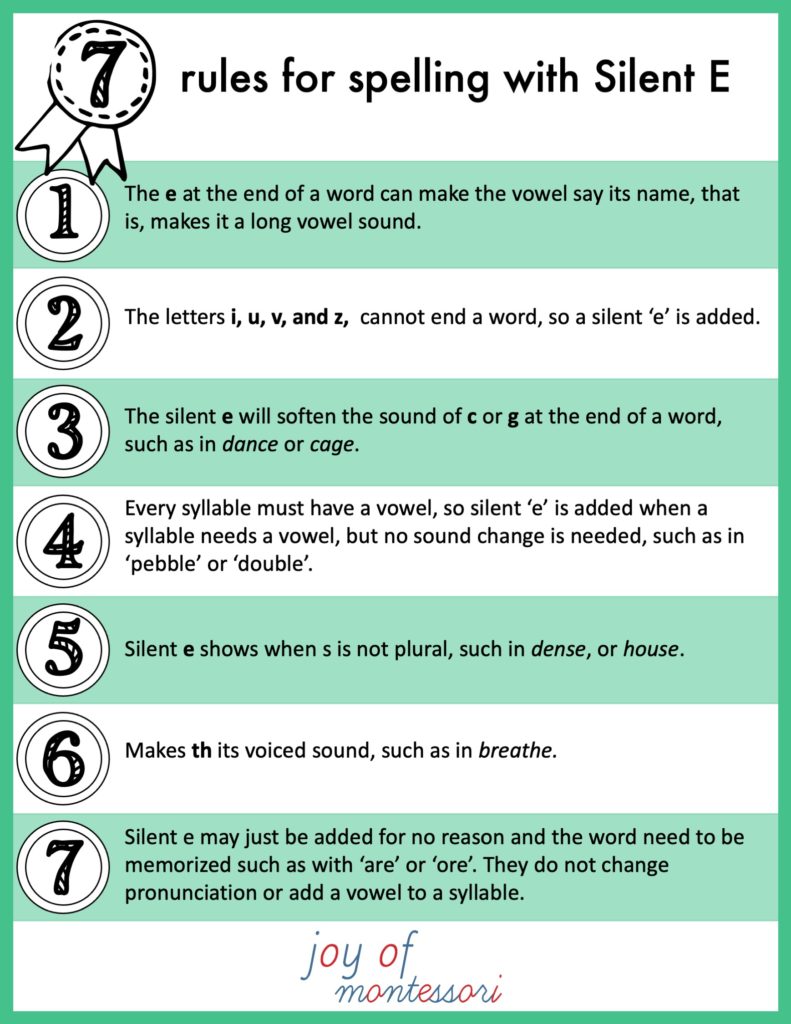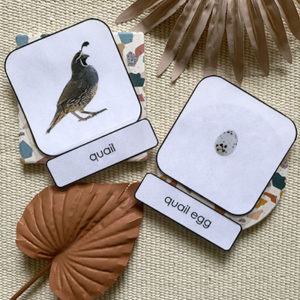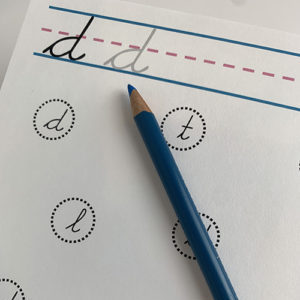The First Rule of Silent E
Once children are familiar with CVC words and can hear the difference between short and long vowel sounds, they are ready to learn the first rule of silent e:
When e is added to the end of a word, it makes the vowel say its name.
It is important to know this rule is just one of many that silent e is used for. You do not need to teach children all these rules at once. Just mention they will learn more in the future. (This is important because some children take phonics rules rigidly and become frustrated when we change the rules on them. It’s good to let them know there are more.)

How to Teach Silent E
The most effective way to teach silent e is to use words the children already know.
For example, use the moveable alphabet to build the word bit.
Next, add an e to the end, “When we add the e, now the vowel i says its name. Now it says bite.”
Confirm the child can hear the difference between the two sounds by replicating them out loud.
You can repeat this process for all the vowels, or just 1 or 2 more words depending on what the child is ready for.![]()
![]()
![]()



Next, remove the e and ask the child what the word says. You can even go through a 3 period lesson with bit and bite if needed.
More Practice for Learning Silent E Words
Children need a lot of repetition with new skills. Introduce activities to provide variety and repetition such as final e flip books, moveable alphabet work (all available in my Silent E Activity Bundle) and if parents ask for something to use at home, I created a simple Google Slides (TM) Silent e Interactive Game that can be done with an adult to check for comprehension.









